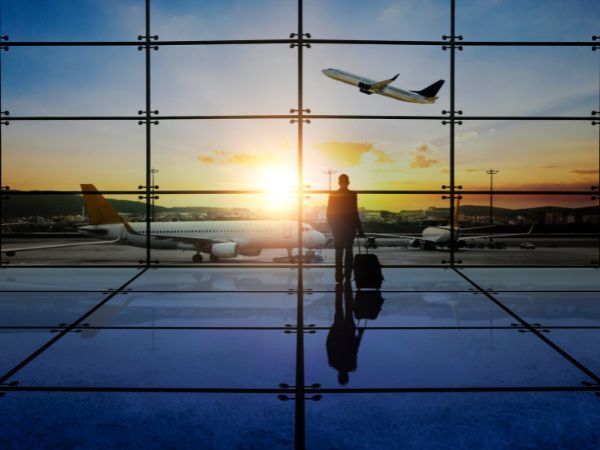If you’ve ever found yourself standing in the luggage aisle staring at two seemingly endless rows of suitcases — one sleek and shiny, the other flexible and fabric-covered — you’ve probably asked the age-old question: hardside luggage vs softside, which should I choose? Let’s be real, picking the right suitcase isn’t just about looks. It’s about how you travel, what you pack, and even how much abuse your bag might face between home and your destination. So let’s break it down in plain language.
First Things First: What’s the Real Difference?
Hardside luggage is what it sounds like: a rigid, shell-like suitcase, usually made of polycarbonate, ABS, or aluminum. These are the smooth, glossy cases you see sliding effortlessly across airport floors. Softside luggage, on the other hand, is usually made of fabrics like nylon or polyester. They bend, they flex, and they look more like a traditional suitcase with exterior pockets and zippers.
The “hardside luggage vs softside” debate boils down to what matters most to you: durability, flexibility, weight, or style. And honestly, no single type wins across the board — it’s about your personal priorities.
Durability: Which One Survives the Airport Gauntlet?
Airports are brutal. Bags get tossed, stacked, dropped, and sometimes even sat on. In terms of sheer durability, hardside luggage has a bit of an edge. Its rigid shell protects fragile items better, and it resists rain, snow, and accidental spills. That said, hardside bags aren’t invincible. They can crack if hit hard enough, though modern polycarbonate options are surprisingly resilient.
Softside luggage holds its own but in a different way. Because the fabric flexes, it’s less likely to crack or dent. Instead, you might see scuffs, fraying, or tears over time. If you’re the kind of traveler who squeezes into tiny overhead bins or stuffs souvenirs on the way home, softside might actually outlast a hard shell by bending instead of breaking.
Packing Flexibility: More Wiggle Room or Structured Space?
Here’s where the “hardside luggage vs softside” argument really gets personal. Softside luggage almost always wins in terms of flexibility. It stretches a little, meaning you can stuff in that extra sweater you swore you wouldn’t bring. Many also come with expandable zippers for bonus space and handy external pockets for quick access items like chargers or passports.
Hardside luggage is more rigid. What fits, fits. What doesn’t… well, it’s not getting in there. On the flip side, hard shells usually split down the middle like a clamshell, giving you two equal compartments. That makes organizing easier if you like to separate clothes, shoes, and toiletries.
Weight: Light as a Feather or Heavy Duty?
Once upon a time, hardside luggage was notorious for being heavy. Aluminum especially added pounds before you even packed a sock. These days, though, lightweight materials like polycarbonate have leveled the playing field. Many hardside bags are now just as light — or lighter — than their softside counterparts.
Softside luggage can be lightweight too, especially in smaller carry-on sizes. But when you add extra compartments, expandable zippers, and reinforced fabric, the weight can creep up. If every ounce matters to you, check the tag before you buy rather than assuming one type is lighter than the other.
Style: Sleek and Modern vs Classic and Practical
There’s no denying it: hardside luggage looks cool. It’s shiny, modern, and comes in colors that practically scream “spot me at baggage claim.” If aesthetics matter, hard shells win the style game. They also tend to look newer for longer since you can wipe away dirt and smudges.
Softside luggage, however, often feels more “professional traveler.” Businesspeople love them because of the easy-access pockets and no-fuss look. They’re more understated but also practical, especially if you’re someone who values quick organization over Instagram-worthy travel pics.
Security: Which Keeps Your Stuff Safer?
Hardside luggage naturally provides better protection against theft because it’s harder to slash through. Most also come with built-in TSA-approved locks. Softside luggage, while secure enough for most trips, is more vulnerable to sharp objects. Of course, no bag is completely theft-proof, but if security is a top priority, hardside has the advantage.
Travel Style: Matching Your Bag to Your Journey
Now here’s the thing — your perfect suitcase really depends on how you travel. If you’re mostly hopping on quick flights with carry-ons, softside might be more convenient with its external pockets and expandable space. If you’re checking bags for long trips or carrying fragile items like electronics or wine bottles, hardside luggage is the smarter bet.
Frequent road-trippers? Softside works beautifully since you’re loading your own bag and don’t need to worry about baggage handlers. Adventure travelers who might face rain, snow, or rugged terrain? Hardside could be the winner for its protective shell.
The Verdict: Hardside Luggage vs Softside
So, hardside luggage vs softside — which one comes out on top? Honestly, it’s a draw, and the winner depends on your personal needs. If durability, sleek looks, and protection are top priorities, hardside is your best friend. If flexibility, convenience, and extra space matter more, softside will make your travels easier. Some frequent travelers even own one of each and swap depending on the trip.
At the end of the day, no suitcase is perfect. The best luggage is the one that makes your journey smoother, keeps your stuff safe, and doesn’t drive you nuts in the airport. Whether you go hardside or softside, the right choice is the one that matches your style of travel — because the real adventure starts once you’ve packed and zipped up.

